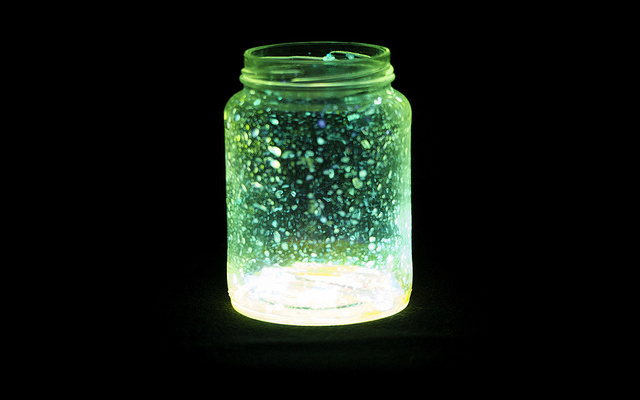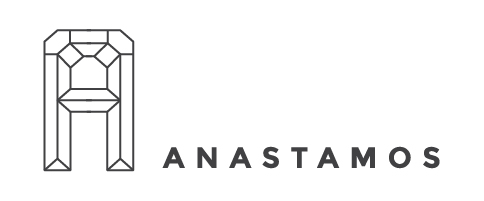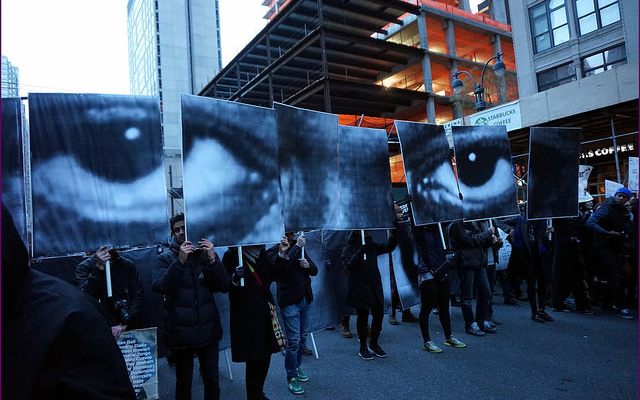
My Illegal Alien Jar | The Dehumanization That I Am Still Reconstructing | By Karina Trejo Melendez
I did not choose to be here.
I was placed without permission in a space where I did not feel I belonged. All because of a
choice that was not my own. Possibly the bravest and most sacrificial choice. One that I would
be unable to grasp and appreciate for a long time.
An illegal alien.
What is that? I knew illegal meant that something wasn’t allowed under the law and thus was punished accordingly. The only experience I had with aliens came from cartoons. The scary green creatures from outer space that wanted to harm us mere earthlings.
Young children view the world through categories. Concrete labels. Us or them. Good or bad.
At the age of five, illegal alien was the first term I was labeled as, and it soon became the only one I identified with. The thinking process of a five-year-old is not very complex but complexity isn’t needed to put together the simple pieces of the xenophobic puzzle. Here it is: Illegal is not allowed. Alien is not human. Therefore, I was not allowed and I must not be human. In the “us or them” scenario, I was them and in the “good or bad” scenario, I was bad. These ideas resonated and stayed in my 5-year-old brain. They planted themselves carefully and quietly. Grew roots in my limbic system and spread to my pre-frontal cortex. A tangle of neurons and rotting roots. I was stripped away from my humanity for the pursuit of a lie. The core of my identity was anchored and set on a twisted trajectory the moment I stepped foot on United States soil. This was the birth of my abstract illegal alien jar.
At the age of six, I was taken out of class along with a handful of other children to go to an English as a Second Language (ESL) class. During my time there, I sat at the yellow table wondering if I wasn’t allowed to be with everyone else because I was not smart enough. I took the word dumb and dropped it in my illegal alien jar. Upon our reintegration with our peers, students never failed to state their observations; we had to leave because we didn’t understand English. Which was true but the sting of what that meant hurt. I became liquid and dripped off the hard-plastic navy-blue chair. I stayed there, soaking into the crayon stained carpet.
Children develop their inner self and with it private thoughts and feelings.
At the age of seven, I learned how to hide. My mother explained to me what it meant to be undocumented. Something I always knew but I didn’t have legal words for yet. It was why my parents couldn’t go to college and why they worked at jobs that my peers’ parents looked down upon. My English got better. It was so good that I didn’t have to go ESL classes anymore. I was assimilating. It would be enough I thought. I had the language to pretend but it was never enough. Blue and purple circles still formed on my knees from being pushed on the blacktop. The small bits of gravel left imprints on my skin as a reminder that the blonde pig tails and bruise-free knees didn’t want to be my friends. I stopped talking, afraid of being found out so I hid within myself, finding comfort where I couldn’t be seen by anyone. Not even my abstract illegal alien jar.
At the age of nine, we moved to a place that had fresh air, an abundance of trees, and more people that were white. More than what my old school had. I didn’t even know that was possible. On the first day of school, I was wearing a light pink shirt. I remember because my tears fell into the collar, deepening it to a rose color. At nine, kids get dropped off. Kids don’t cry. My sister had to walk me to my desk while I sobbed in front of everyone. I wanted to beg her not to leave me there. I wanted to tell her that I had cuts from the words that other children and adults wielded. Instead I just cried. I would later add emotional to the illegal alien jar. It would be in good company next to the other toxic words. Criminal. Parasite. Unknown. Disturbing. Extraterrestrial. Otherworldly. I became very good at this game.
Pre-adolescents become more aware of external factors. They begin to see that their thoughts and feelings may not be shared by others.
At the age of eleven, I learned about the broken narrative in Social Studies. Europeans immigrated to America, my teacher explained. My hand shot up and I asked if they would be considered illegal aliens then. I received a blank stare from my teacher and no response. No. The Native Americans were the ones that were dehumanized in this scenario even if they truly belonged. Even if they owned the land. The ground shifted under my feet, shaking my entire core. Illegal should be used to describe actions, not people. I was human. They were no better than me. The hypocrisy was clear. This was the first time I started questioning the validity of my abstract jar. I brought it out and yelled at it. I screamed, “You were wrong!” It did not hear me.
At the age of thirteen, I had my first crush. I turned to television shows, movies, and magazines to help me catch my crush’s attention. I took my sister’s straightener and found make up that was far too light for my skin tone. Something wasn’t right. My dark curls refused to be perfectly smooth and straight like I wanted and my skin color was all wrong. I cringed at my reflection, questioning why I was so ugly. It was not just my skin and hair. It was also my eyes, nose and my other features that betrayed me. I didn’t know that I was comparing myself to society’s notion that beauty means whiteness. My crush was already dating. He dated blonde haired, blue-eyed girls exclusively. I was crushed and I added ugly to my abstract illegal alien jar. I disguised my feelings as resentment and misdirected it towards my parents who did not deserve any of it. How could they bring their family to a place where they weren’t wanted? What reason could be good enough? The day I understood, I cried and wanted to throw my jar out of our apartment window. But I couldn’t do it.
Adolescents are forming their self-esteem through the reactions of others, comparisons, and social roles.
At the age of fifteen, I took Advanced Placement English. There were no yellow tables here or children that were ashamed of their intellectual abilities. There was an unshaken confidence in the white room I sat in. The books we analyzed all had strong white characters. I must have been placed there by mistake. The hypocrisy was even more blatantly evident. Land of equal opportunity for all. How equal was a system that was made to serve and benefit only one type of person? Navigating the American dream came with a free abstract jar, that I was certain of. Despite it all, I no longer carried resentment. Gratitude replaced it. Knowledge began to tear down the rotting roots that had settled in my brain.
At the age of seventeen, I wanted more than anything to attend a good college and make my parents proud. I started unpacking my jar. I took out each word and deconstructed it. I looked at it under a microscope and found that there was so much good that I was unable to see before. There was a kindness that had been created on top of the negativity. I was blinded by the beams of light that radiated through. Perseverance. Empathy for others’ experiences, no matter how different from mine. Love. So much love. I had never seen my parents’ worn-down hands and tired eyes this way. Registering for the first time that their jars were probably far heavier than mine. I had a place of belonging all along. I hugged them and felt the sacrifice in their bones. I dove into studying humans, that way I could learn how my abstract jar had been built. I could help other people, like my parents, understand their jars. The taunting words in my jar could be transformed into something beautiful. They could be used to heal. The confinement of my jar was lifted. I put my abstract jar away. I didn’t need it anymore.
Adults have the ability to think critically and abstractly. They can analyze their self-concept and their ideal self.
At the age of nineteen, I fought the instincts that told me I didn’t belong in a higher education setting. The years of hiding were over. I found people that loved and celebrated me. All of me. They even knew about my illegal alien jar. I discovered other people had jars too. Some were bigger and some were smaller than others. A community united by unique walks. I sat in classrooms that had a lot of people that were white, but there were also people of color. My professors talked about diversity and the flaws in the broken narrative. They didn’t just stare at me blankly when I asked important questions. There was hope. We did have a chance after all. I experienced a very unusual feeling. I started to love myself and everything changed. This was a pivotal moment in the reconstruction of my humanity.
At the age of twenty-one, I asked myself why all of the characters I wrote about were Hispanic immigrants. Reality sunk in and I said aloud, “You can’t just write about minorities if you want people to read your work. That won’t make you a best seller.” I thought about that. Why did all of my characters hold that identity? And why would I have to make my characters something else to make them bestsellers? What I was really saying was, “Your characters are not white enough. People will get bored of the same narrative.” Even though the white story is regurgitated over and over, people don’t seem to get bored of it. Why didn’t I think anyone would want to read about characters like mine? I was told my entire life that my story was not worth telling and that nobody cared. My abstract jar had proof. In fact, we were being led by a man that directly said so. I brought out my abstract illegal alien jar. It had gathered dust during our time apart. I added animals, drug dealers, and infesters. My jar was more alive than it ever was.
At the age of twenty-two, I feel five years old again. Afraid, clinging on to my now full abstract jar. No one deserves to be subjected to all of the inhumane and negative connotations it carries. I hope one day I can finally break it so no one can ever bring it out again.
 Karina Trejo Melendez is an MFA in Creative Writing student at Chapman University. Her focus is on fiction and non-fiction writing. She earned her B.A. in Psychology and Child and Adolescent Development from Cal State Fullerton, where she conducted research and taught a class at a therapeutic arts non-profit. She is originally from Nuevo Casas Grandes, Chihuahua. As a first generation Mexican American and college student, she previously worked with student organizations to bring opportunities, inclusivity, and social justice to the CSUF community. She continues to advocate for these values as a Graduate Assistant for the Promising Futures Program at Chapman University.
Karina Trejo Melendez is an MFA in Creative Writing student at Chapman University. Her focus is on fiction and non-fiction writing. She earned her B.A. in Psychology and Child and Adolescent Development from Cal State Fullerton, where she conducted research and taught a class at a therapeutic arts non-profit. She is originally from Nuevo Casas Grandes, Chihuahua. As a first generation Mexican American and college student, she previously worked with student organizations to bring opportunities, inclusivity, and social justice to the CSUF community. She continues to advocate for these values as a Graduate Assistant for the Promising Futures Program at Chapman University.
Featured Image: “jar.” by Michelle Carl is licensed under CC BY-ND 2.0



